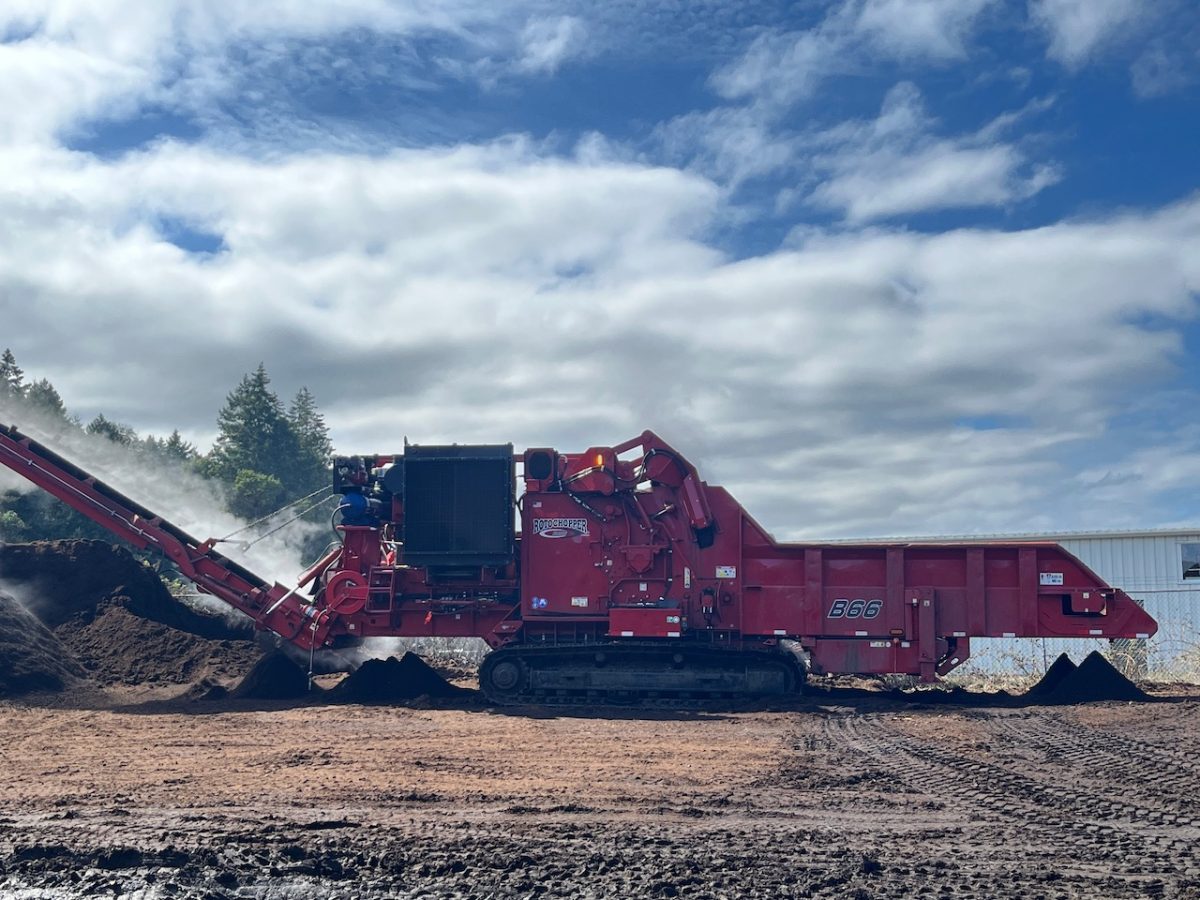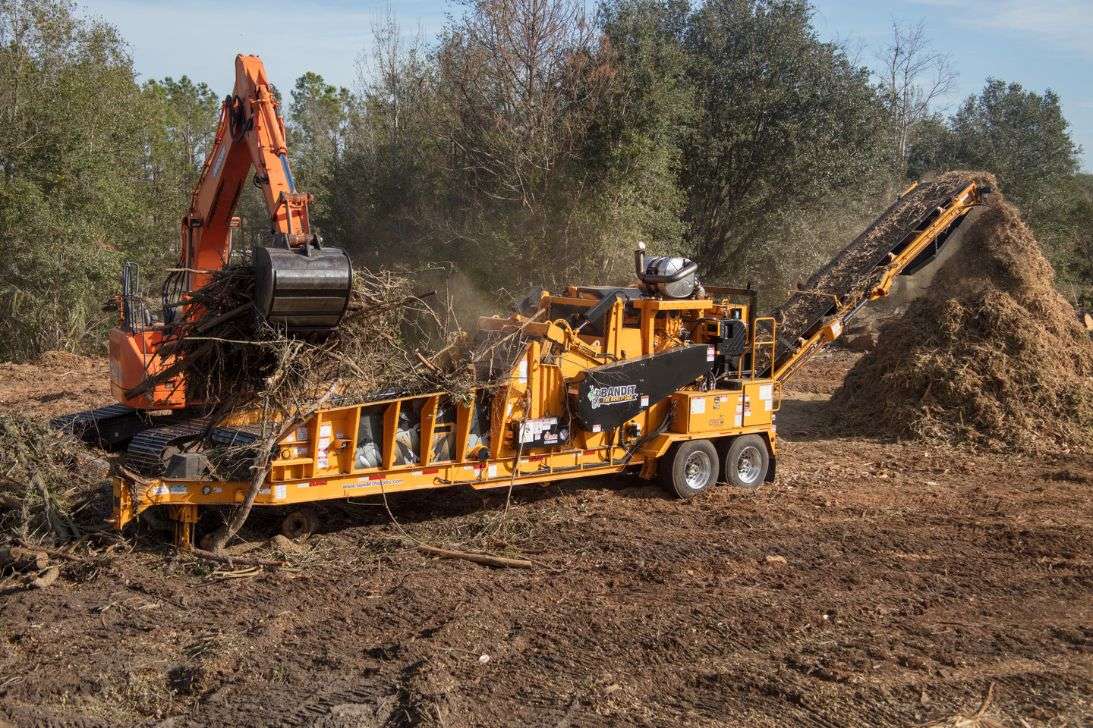Unleash Power and Accuracy: Horizontal Grinders for Wood Recycling
Unleash Power and Accuracy: Horizontal Grinders for Wood Recycling
Blog Article
Elevate Your Recycling Center's Efficiency With a Horizontal Mill
In today's ever-growing globe of sustainability and environmental consciousness, reusing facilities play an important duty in decreasing waste and optimizing resource application. With the boosting volume of waste being created, it becomes critical for these facilities to continually improve their effectiveness and performance. Enter the straight mill, a game-changing tools that has transformed the recycling industry. With its unequaled capacities in processing, sorting, and grinding different products, this sophisticated machine has the potential to boost your reusing facility's operations to brand-new heights. Yet what makes the straight grinder so amazing? Exactly how can it boost your center's efficiency? Join us as we reveal the solutions and explore the myriad advantages this ingenious modern technology offers the table.
Raised Throughput and Handling Ability

A horizontal mill is a durable machine specifically made to grind and refine numerous types of waste materials. It runs by feeding the waste product right into a straight feed hopper, which then passes through a series of blades with cutting blades. These blades shred the product right into smaller, extra workable items, raising the general throughput of the center.
Boosted Product Sorting and Separation
With the raised throughput and processing capability provided by a horizontal mill, reusing facilities can currently enhance their material sorting and splitting up techniques. Using a straight grinder makes it possible for recycling centers to process bigger quantities of waste materials at a faster rate, enabling extra effective sorting and separation processes.
One of the vital advantages of using a straight mill is its ability to reduce the dimension of different materials, consisting of wood, plastics, and building debris. By breaking down these materials right into smaller, extra manageable pieces, it becomes easier to sort and separate them based upon their particular characteristics.

Furthermore, reusing centers can carry out hands-on sorting processes to ensure the proper splitting up of products. This can involve trained workers manually separating different sorts of waste materials based on their make-up or physical homes.
Improved Grinding Efficiency and Particle Dimension Control
To maximize the grinding procedure and guarantee accurate fragment dimension control, developments have been made to boost grinding effectiveness in reusing facilities. These improvements mainly concentrate on improving the performance of straight grinders, which are typically used in the reusing industry.
One secret renovation in grinding efficiency is the growth of more efficient and powerful grinding tools. Producers have actually introduced straight mills with higher horse power and improved torque, enabling them to manage bigger quantities of material and increase grinding rate - horizontal grinders. This causes a more reliable and productive grinding procedure, decreasing the moment and power required to attain the wanted particle dimension
In addition, developments in bit dimension click here to find out more control have been made with the application of ingenious technologies. These modern technologies include advanced monitoring and control systems that enable drivers to precisely adjust the grinding specifications to achieve the desired bit size distribution. Real-time tracking of the grinding procedure makes it possible for drivers to make prompt changes, ensuring consistent and accurate particle dimension control.
Furthermore, making use of innovative testing systems has actually enhanced the effectiveness of bit size separation. These systems employ numerous strategies such as shaking screens and air classifiers to separate the ground material into various dimension fractions. By successfully separating the material, recycling centers can attain higher-quality output and reduce the need for additional processing actions.
Decreased Downtime and Upkeep Expenses
One method to lessen downtime and maintenance costs in recycling facilities is via the execution of positive maintenance techniques. By being proactive, centers can determine and deal with prospective problems before they become significant troubles, resulting in reduced downtime and associated prices.
Normal examinations and preventative maintenance can help identify broken or worn parts in the horizontal grinder, permitting prompt fixings or replacements. This proactive approach aids stop break downs throughout procedure, as well as pricey emergency situation repair work.
Additionally, applying a thorough maintenance timetable guarantees that all necessary maintenance jobs are done consistently. This includes lubricating relocating components, checking and readjusting belts, and checking hydraulic systems. Regular upkeep helps keep the horizontal grinder in optimum condition, minimizing the danger of unanticipated failures and the requirement for extensive repair work.
Along with proactive maintenance, training and education for devices drivers can play an essential function in decreasing downtime and upkeep costs. Well-trained operators are more probable to identify early signs of devices breakdown and can take ideal activity to stop further damage.
Decreased Environmental Effect and Garbage Disposal Expenses
Implementing sustainable techniques in recycling facilities can bring about a decreased ecological effect and reduced garbage disposal costs. By including a horizontal mill right into the recycling procedure, centers can achieve these goals successfully. Among the primary benefits of utilizing a straight mill is its capability to successfully refine a variety of materials, consisting of plastic, construction, and timber particles. This decreases the quantity of waste that needs to be taken care of in landfills, therefore minimizing the center's ecological footprint.
Furthermore, a straight grinder can aid recycling centers save on waste disposal expenditures. The ground-up products can frequently be repurposed or reused, offering added income streams for the center.
Additionally, the usage of a horizontal mill can also add to a reduction in greenhouse gas exhausts. By diverting products from landfills, the launch of methane gas, a potent greenhouse gas, is decreased. This helps minimize climate adjustment and promotes a more lasting future.
Conclusion
To conclude, integrating a horizontal grinder right into a recycling center can substantially boost effectiveness and click site productivity. This devices provides boosted throughput and processing ability, improved product sorting and separation, enhanced grinding performance and particle size control, lessened downtime and upkeep costs, in addition to reduced ecological impact and waste disposal expenditures. By utilizing a horizontal browse around this site mill, reusing centers can enhance their operations and contribute to a much more lasting future.
With its unrivaled abilities in handling, sorting, and grinding different products, this sophisticated device has the possible to elevate your recycling facility's operations to new heights. Recycling facilities typically deal with difficulties when it comes to effectively processing big volumes of waste materials.Recycling facilities can utilize various techniques to enhance their product sorting and splitting up approaches. By properly dividing the material, recycling facilities can achieve higher-quality end products and reduce the demand for added handling actions.
The ground-up products can typically be repurposed or recycled, offering extra income streams for the facility.
Report this page